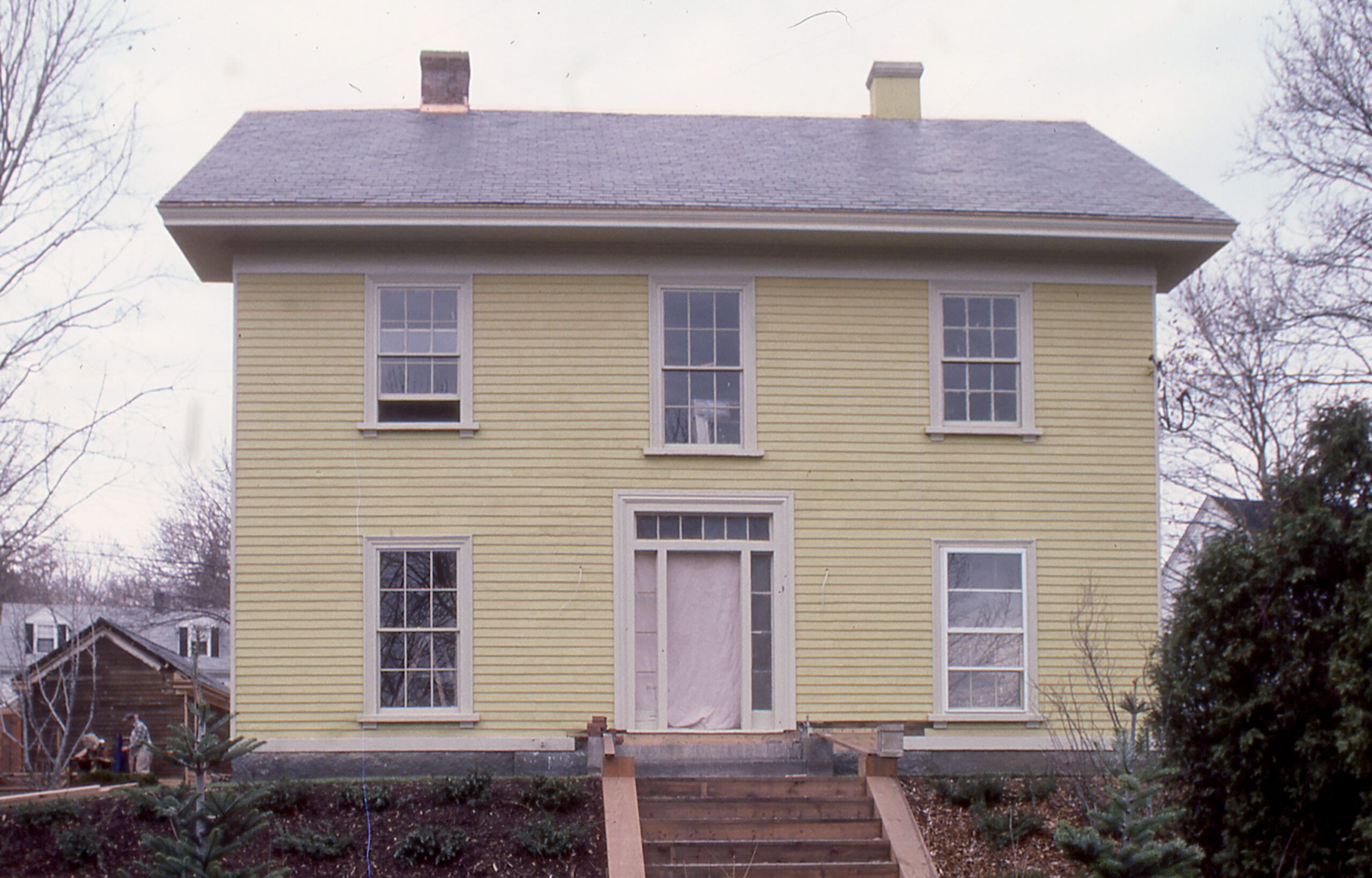Old houses are seldom untouched by the passage of time. Through the years, owners make additions and changes according to need or fashion. Some are for better; some for worse. Such was the case at This Old House‘s fourth project, an 1850s Greek Revival-style farmhouse in Arlington, Massachusetts. The surrounding 40-50 acres, once the original farm land, was slowly carved up into 1/4-acre lots until the farm was gone and a tight suburban neighborhood stood in its place. As the neighborhood grew, so did the house, gaining a rear el and an attached garage.
While the main house itself was still solid and serviceable, with its plain, symmetrical front façade and architectural detailing, the building’s rear el was a different story. The large true-divided light windows, plaster cornices and soaring ceilings of the main house gave way to squeaky floors, drop ceilings and knotty pine paneling. Beyond the kitchen, the el had no foundation to speak of; its wood joists rested directly on the ground, where they were prime targets for both rot and insect damage. The wonder was that the el had stayed standing as long as it had; it wouldn’t for much longer.
Rather than attempt to shore up the el’s faulty structure, the This Old House crew decided to raze it and build an entirely new addition to house a spacious modern kitchen and sunroom on the first floor and an exercise spa complete with weight room, rowing station and sauna above. In the process, the old basement under the kitchen was converted into a wine cellar, outfitted with custom shelving and display racks. The garage, detached and relocated to the far corner of the back yard, gained a new foundation for its new life as a workshop and shed. The arched window echoed that of the gazebo, part of the re-landscaped front walkway that lead visitors through the yard to front door.
Rooms inside the main house retained their original character but were adapted for modern use. With the addition of bookcases, the front parlor was transformed into a library. Restored to its original dimensions by the relocation of an entrance to the second floor apartment, the living room became a media room, complete with projection screen television. The dining room gained a set of French doors that connected it to the new sunroom and kitchen, giving the house a more informal feel. Upstairs in the rental apartment, new appliances, cabinets and flooring updated the kitchen and economical, portable furnishings made the most of limited space.
Outside, the crew worked to preserve and restore the house’s period details. Craftsmen carefully repaired the slate roof, well over 100 years old. Replacing or repairing a slate roof can be an expensive proposition; the effort is only worthwhile if the slate is of high quality. In this case, the slate hailed from a quarry in Monson, Maine, that yields some of the best slate in the United States. Crews then sandblasted decades of old paint off the house, which was then stained an appropriate period yellow. Finally the six-over-six, floor-to-ceiling windows, a prominent feature of the house’s façade, were restored and repainted to complement the clapboards.
When the final coat of paint and stain had dried, the house had lost its old-fashioned improvements, gained modern living space and recaptured its former glory.

